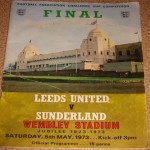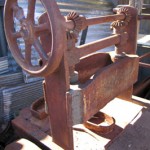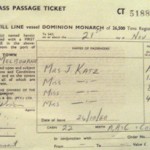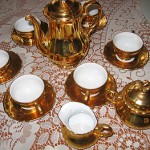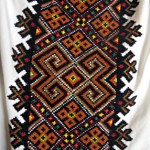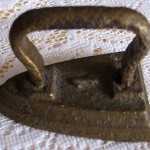(nee Bakaj)
Slovenian
Jesenice, Slovenia
Belgrade, Yugoslavia (now Serbia) on 27 November 1973
Brisbane on 29 November 1973
I stayed with my parents in Brisbane.
Commercial artist in a factory
Visual artist and merchandiser; interpreter and translator.
I was born in 1954 on New Year’s Day. I was born in Bosnia where my parents were living at the time. After one year they moved on to Croatia and then soon to Slovenia. My earliest memories take place in Slovenia. I was about three years old. My doll from Croatia is an antique doll made from felt and other fabrics. You can move the arms and legs and they stay in that position.
Our family consisted of four children and my parents. I had an older brother and sister and one younger brother. Our very first home in Slovenia was the oldest house in the town of Jesenice, built in the 1800s. Jesenice is close to the border of Austria and Italy; I grew up in alpine country. Our home was made of timber logs with concrete blocks at the base and it had wooden panels for the roof. I played around our home with the surrounding neighbourhood children and the street was so narrow only one car could pass through at a time. Sometimes I would go with my mother up into the forest directly behind our home. We would pick mushrooms in autumn, chestnuts and berries in summer. I have very fond memories of living in this home.
At this time Slovenia was part of Socialist Yugoslavia. My father was not a member of the Communist Party. He was a carpenter and because of his convictions and beliefs, it was very difficult for us to get good accommodation and for him to find well paid work, despite his experience and skills. My father’s salary was very small compared to other tradespeople in the Communist Party, so when he was offered a job in Germany he accepted this.
[The rest of the family] moved again, this time into a theatre [in Jesenice] where my mother was the caretaker. I was nine years old. I have wonderful memories of living at the theatre. We were constantly surrounded by actors, musicians and stage designers. I have strong visual memories of actresses putting their make-up on, the costume designer sewing beautiful costumes, the stage lighting. I would play on the stage when it was not being used.
My family were also involved in the theatre. I remember that if they needed children to act in a particular play, they would ask me or my siblings. At this time I became very interested in classical music and the opera. Our apartment was directly above the hall where the orchestra had rehearsals, and I remember falling to sleep to the sounds of the orchestra.
At the age of 14 we moved on to a new home which my parents had bought and I moved away and started secondary school in the capital, Ljubljana. I studied visual merchandising. Visual merchandising or window dressing is considered an elite type of job in Europe. I enjoyed studying and was also confident I had selected a trade which would give me a basis for stable employment.
Before I finished my studies my parents had decided to emigrate. My father had been living in Germany now for seven or eight years and my mother was not happy, she wanted them to be able to live together and earn a reasonable living. My parents decided to move to Australia because my mother had two sisters living here. By this time my eldest brother was married so he stayed in Slovenia and my older sister had moved to Germany as a nurse. I was in Ljubljana and wanted to finish my studies, so it was only my parents and youngest brother that migrated to Australia.
After I finished my visual merchandising I enrolled at university to study languages – I always had a love for languages. I had been living independently for some time now and then my mother arrived from Australia with two return tickets and said, “You are coming”. I had to leave Ljubljana and my friends. This was a major turning point in my life.
I really did not want to immigrate, but [as] respect for my parents, I felt I had to. So we went and arranged a visa through Belgrade; it took three months. I did not want to tell anybody I was leaving [and] disappointed a lot of my friends by not saying goodbye. It was initially a disappointing experience as my plans for study collapsed but I decided I would give Australia a go.
We arrived into Brisbane airport from Belgrade on 29 November 1973. The first thing that surrounded me was the heat and humidity; we had just left a European winter. My parents were living in Brisbane in a ‘Queenslander’ and I moved in with them.
In Slovenia my parents were indirectly persecuted for their moral and religious beliefs, they were Seventh Day Adventists. I also experienced persecutions myself because of my faith, in the school system. Due to my convictions and faith, I was expelled from secondary college. But I managed to finish it via external examinations. When I was older, I realised I had experienced great injustice because of my faith and felt I was unable to freely practice [it]. This is one of the major reasons my parents immigrated. In Slovenia you needed to keep your faith separate from the state and it was easier and wiser to keep it very quiet.
So when I moved to Australia I was completely overwhelmed by a sense of freedom: freedom of speech; freedom of expression; freedom to practice your faith; freedom of choice. It was wonderful.
However, I did have my ambitions and it was very frustrating not being able to consummate these. This was really difficult for me. It was 1974 and at this time I was simply told to just go and work in a factory. No other options were presented to me and my qualifications from Europe were not recognised.
I started work in a factory and lasted two days. I could not do the work, I felt I was giving up and I had my English. I had studied English for eight years. I found a job as a commercial artist, designing badges for a company called AJ Parkes. I designed something like 400 badges a year and this provided a great opportunity for me to learn about Australia, all the different clubs and associations, the sporting groups. I thought I will just earn enough money to go back to Slovenia and then I can continue my studies, but this never happened. I met my future husband, fell in love and got married.
Life moved on, we moved to Albury in 1980 to be closer to the mountains and snow, and I had two wonderful children, a daughter and a son, but the homesickness for Slovenia never fully healed.
It was not until both my children were at school that I returned to study and acquired my visual arts diploma. I also became accredited as an interpreter for languages. I felt like I needed to do this because I was unable to complete my language degree in Slovenia. My first interpreting was for a murder case in Brisbane, I have always been an active interpreter and translator and still am.
My love for painting was rekindled after an exhibition I saw in Brisbane that completely inspired me. I immediately came home and started to paint. I had a particular style that I wanted to pursue; I was influenced by Croatian naive art and surrealism. My first solo exhibition occurred in 1993 in Slovenia, this was the first time I had returned to Slovenia alone and during this time I began to heal my homesickness; it was 20 years after my migration to Australia.
When I returned to Slovenia, I visited my home town of Jesenice. I saw my first home and all these memories came flooding in. The address plate from our home was almost about to come off, just hanging there, and so I collected it. The house was in ruins and nobody was living there anymore so it would not be missed. The address plate is in the identical format to all those made under Socialist Slovenia, with the street name and number in white on a red background.
I started to collect house keys on my return journeys to Slovenia. They reminded me of keys we had in the homes I lived in as I grew up: the log house, the theatre residence, a flat I lived in at college. Friends from Slovenia even gave me keys as presents. They remind me [of] growing up and are simply such beautiful objects.
I returned to Slovenia again and again; I now feel the wound has been healed with the help of my art. I needed to be an artist and my art has just flourished. I have had 22 solo exhibitions. Five of these exhibitions have been overseas and I just cannot stop. I feel I have so much to express. Much of my art in the beginning was about how I felt about immigrating, my homesickness for Slovenia, and it was maybe ten years later that I started to paint the Australian landscape.
Those Blue Jeans is a self-portrait oil painting after my migration to Australia. In the background is the landscape of my childhood in Slovenia and I sit in the foreground wearing blue jeans which to me symbolise the freedom of expression I gained coming to Australia. It was painted in 1989.
Through my experiences I feel it is not necessary to abandon the country you have immigrated from, or to feel that you do not belong there anymore. I feel I belong to both sides of the world and I don’t mind that. When I return to Slovenia I still call that my home and yet I live in Australia and this is where my home is now. Slovenia was my home as a child and growing up until the age of 18, this time had a great influence on my life, but I have lived in Australia for over 35 years now and my children are here.
I have two homes, I love both countries.


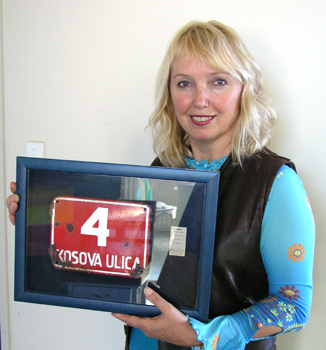

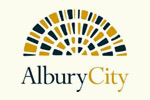
!["I started to collect house keys on my return journeys to Slovenia. They remind me [of] growing up and are simply so beautiful."](../../../cms/wp-content/uploads/2008/10/keys-150x150.jpg)
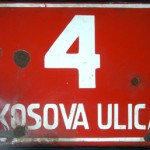
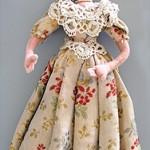
!["This oil painting is a self-portrait after my migration to Australia. [It] symbolise[s] the freedom of expression I gained."](../../../cms/wp-content/uploads/2008/10/painting-150x150.jpg)
